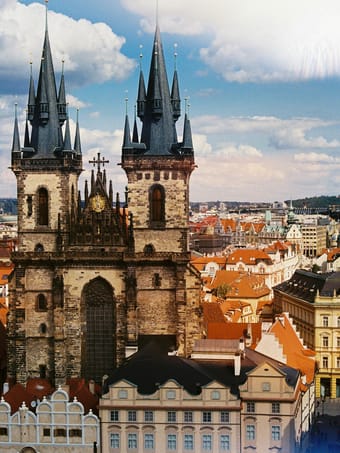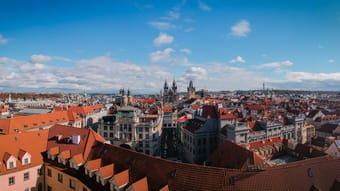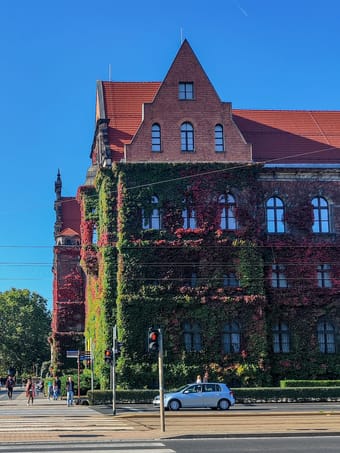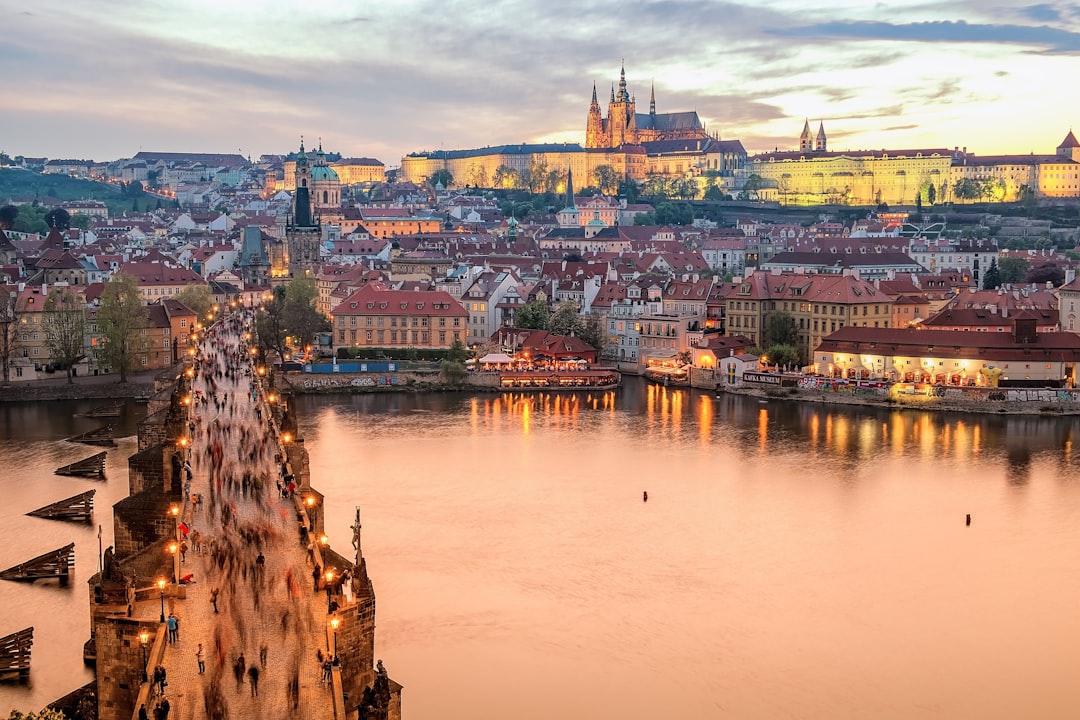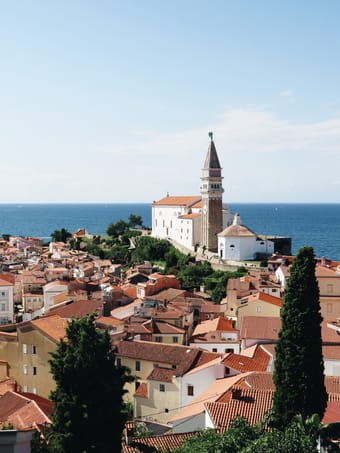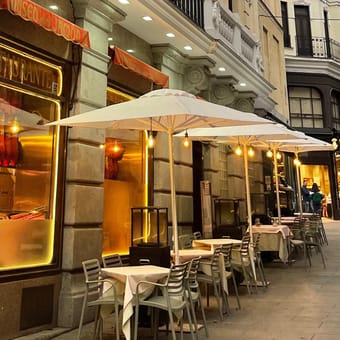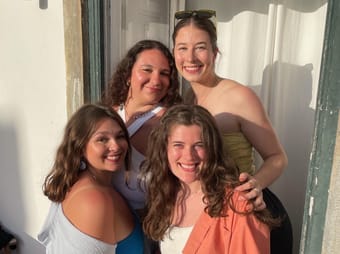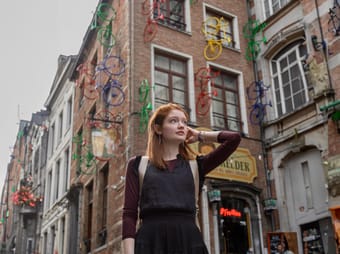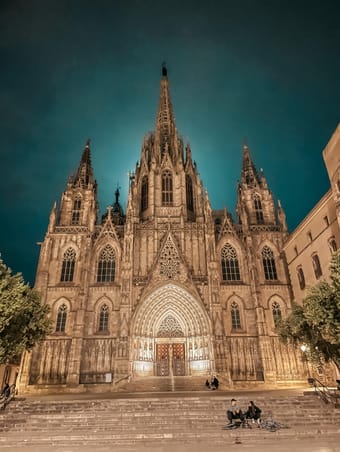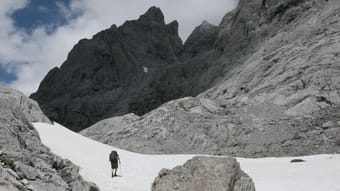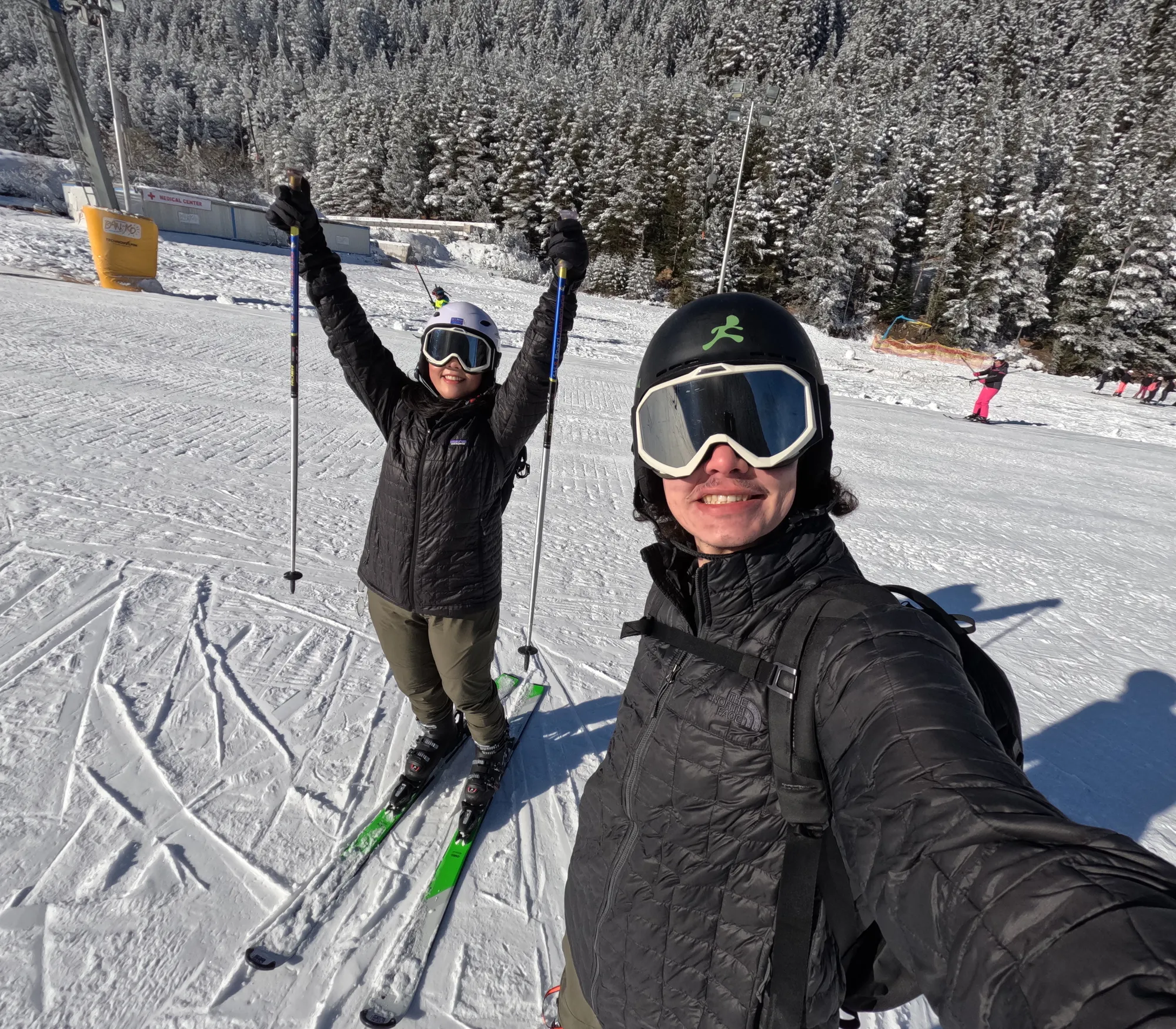Results for Central Europe
⭐️ This guide is designed to help you craft the perfect itinerary spanning three of the continent's most enchanting capitals: Prague, Vienna, and Budapest!
🏰 Immerse yourself in the rich history, stunning architecture, and vibrant culture that these cities have to offer. Explore the medieval charm of Prague's Old Town, the imperial grandeur of Vienna's palaces, and the eclectic mix of old and new in Budapest!
🍽️ For the foodies, I've included restaurant recommendations in each city!
🚂 Plus, I'll provide you with all the tips and tricks you need to navigate Central Europe like a pro. With detailed descriptions and handy map pins, you'll breeze through your travels with ease.
🌍 Whether you're a history buff, an art aficionado, a food lover, or an adventure seeker, Central Europe has something for everyone. Get ready to embark on the journey of a lifetime as you explore the wonders of Prague, Vienna, and Budapest!
🎀For a personalized itinerary email info@whereissibley.com🎀
Free
16
Prague holds a special place in my heart as it was my first solo backpack trip. You can be 100% sure I planned this trip to perfection, as I was doing it alone for the first time.
The largest and capital city of both the Czech Republic and Bohemia historically is Prague. Prague, with its rich history and impressive examples of Romanesque, Gothic, Renaissance, and Baroque architecture, is a major cultural, political, and economic centre of Central Europe. It served as the seat of various Holy Roman Emperors. The city was built next to the Vltava River, which provides stunning views. Prague is home to many well-known cultural landmarks, such as the Jewish Quarter, Petřín Hill, Vyšehrad, Old Town Square with the Prague Astronomical Clock, and Prague Castle. Prague's historic core has been listed as a World Heritage Site by UNESCO since 1992.
All of the above and many more you can find in this 3-day intense trip plan, that will guide you through the most beautiful and interesting places in Prague. Be prepared to walk 20k+ steps per day!
Backpacker • Car-free • Female Solo • Architecture • Art • Budget • History • People & Culture • Slow Travel
$15.00
2
Hungarian food is amazing. Budapest has this perfect mix of influences from Central Europe, Austria, and its own culinary traditions come together to make some great meals. Budapest also has a bunch of great restaurants representing food from all over the world!
Combine that with the city’s unique ruin bars, great cocktail bars, and a delicious coffeeshop scene, and you’ve got a city you won’t want to miss!
On this guide, you’ll get:
- general tips for what to know before you get to Budapest
- an interactive map to help navigate you to each spot
- 9 Hungarian restaurants at varying price points, 3 international restaurants, and 3 cafes
- 4 cocktail bars and 3 ruin bars (a Budapest specialty)
Before you buy: everything on this list is included in the Budapest Master Guide, so if you want activity suggestions as well, choose that instead!
Foodie • Coffee • People & Culture
$11.00
0
Discover Wroclaw, Poland's hidden gem, where history meets modern vibrancy. Be ready to explore the enchanting Old Town with its Gothic spires and lively Market Square. Cross iconic bridges to Cathedral Island for a glimpse into the city's religious heritage.
This guide includes:
✈️Getting to Wroclaw
🛌🏻Accommodation
🧙🏻♂️Hunt the countless dwarfs
🧭Explore - Indoor
🧭Explore - Outdoor
🏛️Discover the Murals
👜Flea Markets in Wroclaw
🍴Places to eat
🍹Places to drink
Did you know that...?
- Wroclaw is also known as Breslau, since it was a part of Germany?
- Wroclaw's University is one of the oldest in Central Europe, founded in 1702?
- It was a part of Germany until the end of Second World War?
- It has influences from Polish, German, Czech and Jewish?
- It used to have over 300 bridges?
Backpacker • Car-free • Couples • Groups • Female Solo • Budget • People & Culture • Wellness
$5.20
0
Welcome to Prague, the City of a Hundred Spires. Nestled in the heart of Central Europe, Prague is a city that enchants with its rich history, stunning architecture, and vibrant culture. From the cobblestone streets of the Old Town to the majestic Prague Castle, every corner of the city tells a story. As you explore its Gothic churches, Baroque palaces, and modernist buildings, you'll be transported back in time, witnessing centuries of architectural evolution. But Prague is not just a city stuck in the past. It's a dynamic metropolis that offers a thriving food scene, world-class museums, and a buzzing nightlife. Whether you're a history buff, a foodie, or a night owl, Prague has something for everyone. This guide is designed to help you experience the best of Prague in style, offering luxury recommendations for accommodations, dining, and experiences. Get ready to uncover the magic of Prague, one street at a time.
Free
9
Slovenia, between Central Europe and the Mediterranean, offers a perfect blend of natural beauty and cultural richness for a one-week itinerary.
Begin your journey in the charming capital, Ljubljana, exploring its picturesque old town, Ljubljana Castle, and vibrant café culture. Head north to Lake Bled for breathtaking alpine scenery, the iconic island church, and Bled Castle. Venture to the Triglav National Park for hiking and the stunning Lake Bohinj. Don't miss the enchanting Škocjan Caves, a UNESCO World Heritage site, and the coastal town of Piran, known for its Venetian architecture and Adriatic Sea views.
Slovenia’s compact size makes it easy to explore its diverse landscapes and rich heritage within a week.
This guide includes:
- introductory note
- places to visit (photo spots, museums and cultural venues, beaches, natural oaks and gardens, open squares and others)
- restaurants, coffeeshops and sweets spots
- photo spots
Get to see more from my travels on my Instagram (@pedralexpereira) and Flickr (flickr.com/photos/pedralexpereira)
Accessibility • Backpacker • Couples • Family • Digital Nomads • Groups • LGBTQ+ • Female Solo • Adventure • Architecture • Art • Boutique • Budget • Camping • Coffee • Design • Faith • Foodie • History • Outdoors • Overlanding • People & Culture • Photography • Relaxation • Road Trip • Romantic • Slow Travel • Wellness
$15.00
3
Your free & paid guides for Denmark, all in one place.
A little bit more about myself:
I'm French and spent most of my life between France and the UK. I have always loved travelling and started visiting European capital cities during Uni. In 2019 I did a bus trip to Central and Northern Europe only taking night buses for a week (Lyon - Prague - Copenhagen - Berlin - Munich - Lyon) and fell in love with Copenhagen. I came back to Copenhagen 3 years later in 2022 to get married with my now husband so Copenhagen holds a very special place in our hearts.
Through these guides, I want to encourage you to explore Denmark's hidden gems & most beautiful locations.
TIP: If you wish to get a sense of where these locations are relative to Copenhagen, make sure to use the map feature!
I hope these guides will be useful and inspire you to explore more of the country.
COMING SOON:
➕Day Trips from Copenhagen
➕Getting Married in Copenhagen for foreigners
NB: This is not a PDF but an interactive guide which means that when you click on a place in the guide or map you can directly open directions on your phone's Google Maps app, call restaurants or book hotels.
Don't forget to download the free Thatch app to get easier access!
Tag us on Instagram (@Tootly.travels)
Backpacker • Car-free • Couples • Digital Nomads • Family • Groups • Female Solo • Accessibility • 50+ • Architecture • Boutique • Budget • Coffee • Design • History • Luxury • People & Culture • Photography • Road Trip • Slow Travel
Free
9
Some research based shortlisted hotels in Europe & Asia. All are central locations. Book away if you like any and you're welcome to share your feedback as I haven't stayed in most. Find me on Insta @nehastravelworld if you want to see my travels :)
You can get personalised guide for any of the destinations by simply scheduling your first travel consultation or by signing up for one of the curated recommendations packages on Thatch!!!
Destination included in this guide: (keeps getting updated)
Asia: Bali, Thailand, Vietnam, Sri Lanka
Amsterdam, Brussels, Spain (Barcelona, Madrid, Malaga, Sevilla), Lisbon, Vienna, Italy (Rome, Naples, Tuscany, Florence, Cinque Terre, Lake Como, Puglia, Amalfi Coast)
Female Solo • Digital Nomads • 50+ • Backpacker • Business • Couples • LGBTQ+ • Family • Groups
Free
16
Have you ever heard of a tiny chicken-shaped country in the heart of Europe called Slovenia? If not, I believe it is time you discover its beautiful mountains, seaside, vineyards, and more!
In this guide, we will explore various diverse regions of Slovenia, including the capital city of Ljubljana, the second largest city of Maribor, the seaside region and region of Julian Alps - Gorenjska.
Backpacker • Couples • Female Solo • Family • Groups • Relaxation • Outdoors • Wine
Free
3
If you're planning to travel solo in Europe, this guide is exactly for you! Since I was studying and living abroad, I used to travel a lot, and meeting like-minded people during my travels was a must! So, here I selected my ABSOLUTE FAVORITES. 💯 These are the places that made my travels unforgettable and left a footprint in my life.
✍🏼 If you click on the "details" you will see my personal note with some useful information about the place.
📌 Once you PURCHASE the guide, you'll have lifetime access to all its updates!
📌 SUBSCRIBE to be notified about the new guides!
Adventure • Architecture • Boutique • History • People & Culture • Coffee • Wine • Road Trip • Romantic • Foodie • Wellness • Photography • Shopping • Budget • Art • Design • Nature • Slow Travel • Mountain • Beach • Van Life • Relaxation • Sustainable/Eco • Luxury
$5.95
3
Backpack Aleks
Available for hire
Europe in 3 weeks 🇩🇪🇮🇹🇫🇷🇲🇨🇧🇪🇳🇱 24 days budget itinerary through 6 European countries
This itinerary will take you through 6 European countries in 24 days. It starts and ends in Frankfurt as it has one of the major airports in Europe. I will walk you through day-to-day, places to visit, activities to do and what are the best options when it comes to transport between locations. I created this itinerary after travelling through Europe for the last few years. I combined my experiences to create a compact itinerary that lets you make the most out of 3 weeks in Europe.
📍Germany
📍Italy
📍Vatican
📍France
📍Monaco
📍Belgium
📍Netherlands
What is included:
✔️ Day to day itinerary for 24 days
✔️ Recommendations for activities in each location
✔️Two recommendations for budget accommodation in each location
✔️Food tour recommendation for each country to taste traditional food
✔️Comparison (price, duration, convenience) of transport options - bus, trains and Eurorail pass.
What is not included
❌Restaurant recommendations
50+ • Accessibility • Backpacker • Car-free • Couples • Digital Nomads • Family • Groups • Gluten-free / Celiac • Halal • LGBTQ+ • Pets • Plus Size • Female Solo • Vegan • Vegetarian • Adventure • Architecture • Art • Boutique • Budget • Design • Faith • Foodie • History • Outdoors • People & Culture • Photography • Relaxation • Road Trip • Romantic • Shopping • Sustainable/Eco • Wellness • Wine
$15.00
3
Después de 6 años viviendo en Suiza y armando muuuuchos itinerarios combiné de la mejor manera los lugares que si o si tienes que visitar para aprovechar de la mejor manera el SWISS TRAVEL PASS.
Vas a disfrutar del Glacier Express, Zermatt la zona central de Suiza como Jungfrau e Interlaken y también dos de las ciudades más lindas de Europa: Zurich & Lucerna.
El itinerario está orientado para realizarse en todas las estaciones del año!
Adventure • Foodie • Nature • People & Culture • Romantic • Slow Travel • Photography • Mountain • Camping • Relaxation • Sustainable/Eco • Wellness • Luxury • Budget
$19.00
5.0
(2)
9
Brussels, the capital of Europe, is a thriving international city full of delicious food and amazing sights. Though many people choose to visit Bruges over Brussels, don't discount this city. Almost nothing can compare to seeing Grand-Place in person.
Just because Brussels is a political hub does not mean the city does not have extraordinary churches, museums and plenty of fun activities.
____________________
What's Included:
🏡Recommended Stay Options
🏛️Significant Sites & Churches
🏤Museums
🪺Greenspaces
🎇Nightlife
🧇Great Eats
🚙Transit & General Info
🚎Day Trips Worth Considering
See "Day Trips Worth Considering" if your trip leaves you with extra time for exploring beyond the city limits.
____________________
A sneak peak of the helpful info in this guide:
"Important: Pedestrians do NOT have the right-of-way in Brussels. TRAMS have the right-of-way, then the police, then pedestrians. Before crossing the street, check an additional time for trams.
Bruxelles Midi is by far the most dangerous place is the city. Pickpockets are always there and they may not even try to be stealthy. As far as I have heard, they won't physically harm you, but they might try to take your things. Keep your hands and your eyes on your luggage."
____________________
Fun Fact: Did you know the Brussels is known as a comic book hub?
Architecture • Art • Coffee • History • Outdoors • People & Culture • Photography • Shopping
$12.00
5.0
(1)
3
Welcome to the ultimate guide for unlocking the full magic of Barcelona, one of Europe's most captivating cities. Barcelona truly has it all: art, a rich history, culture, mouthwatering cuisine, inviting beaches, and architectural wonders. It's no wonder that Barcelona consistently ranks as one of the world's top tourist destinations.
I've had the pleasure of visiting this vibrant city over ten times, drawn not only by my many friends who call Barcelona home but also by the unique energy that surrounds it. My first solo trip to Barcelona at the age of 19 left me instantly enamored with its charm, and now, at 31, the city continues to dazzle me in countless ways.
Let me be your guide to ensuring that your Barcelona adventure is nothing short of extraordinary, with my personal recommendations and insights." ✨🇪🇸
This itinerary includes:
- Essential tips to know before traveling.
- Four full days in Barcelona, featuring renowned landmarks alongside hidden gems, with an optional day trip to either the beach or the mountains.
- Within each neighborhood, you'll discover my curated recommendations for restaurants, bars, cafes, and brunch spots.
- I've also meticulously selected accommodations that prioritize affordability, prime locations, and high-quality amenities.
- Some exciting plans to enjoy in Barcelona beyond sightseeing
Backpacker • 50+ • Car-free • Couples • Digital Nomads • Family • Groups • Female Solo • Architecture • Art • Budget • Coffee • Design • Foodie • History • Outdoors • People & Culture • Photography • Slow Travel • Wellness
$9.99
58
Seven-day trek based in refugios.
INTRODUCTION
The Picos de Europa is a region of limestone peaks reaching over 2500 metres above sea level; the highest being Torre de Cerredo at 2650 metres. The route described here is one that I hiked alone in early summer. The best time to tackle the route is between June and September. There is more likely to be snow on the high passes in early June but they are usually not to difficult to negotiate.
The Picos de Europa is not as well known as the Pyrenees or Alps and as such the hiker traffic is less and the tourist infrastructure is less developed. This makes the area feel less spoilt but it can also make it a more challenging area to explore with fewer trails and little to no signposting. Always take a map with you: the Editorial Alpina 1:25,000 maps are the best. I took these and also used the outdooractive app and downloaded the relevant map tiles. This is useful for pinpointing where you are, in what can be confusing terrain. I was lucky to have clear weather for my entire trek but I would imagine that it's pretty difficult to navigate when the cloud is down on the mountains so take a compass too.
You can stay in refugios every night on this hike and wild camping is permitted above 1500m; details below.
I can't recommend the Picos de Europa as a hiking destination enough. The mountains are magnificent but there are also beautiful extensive woodlands at lower altitudes, as well as meadows full of wildflowers and butterflies. The juxtaposition between the stark limestone peaks and the gentle greenery of the valleys is beguiling.
DISCLAIMER: Please note that hiking in the Picos de Europa is not risk free. It is a very challenging area in which to hike. I accept no responsibility for any accidents you may experience while hiking this route. You are responsible for your own safety. Some of the dangers and difficulties are listed a little further down this guide.
HOW BUSY?
Unlike some of the more well know hikes around Europe this trail is less well trodden and as such the trail can be quite hard to follow at times, and at other times there is no trail! Despite this, refugios, being small, fill up fast (see below).
REFUGIOS
The hike is made easier if you stay in the staffed refugios where you can recharge your metaphorical batteries. Accommodation at these mountain huts is in communal dormitories and you will need to bring your own sleeping bag. It's best to book ahead as they are often full throughout the summer. Prices are around the €12-17 mark and they also do affordable meals (breakfast, picnic lunch and dinner).
There is also a handful of unstaffed, very basic mountain shelters with no services and no beds but these can be a good option in an emergency. Most of the refugios only accept cash so be sure to take plenty with you before you set off as there are no ATMs! All the refugios on the route are listed in the route description below with website links.
WILD CAMPING
Camping is only permitted at 1500m above sea level or higher. There is not much water anywhere above this altitude so be sure to fill up when you get the chance (at refugios) before camping in a remote spot.
POSADA DE VALDEON
This beautiful village tucked in the valley between the Macizo Central and Macizo Occidental is a lovely place to wander for a few hours. At the centre of the village there are a number of restaurants and bars and a small square with a water fountain. If you need somewhere to stay before or after the trek you'll find hotels, guest houses and a youth hostel. There is a hotel recommendation and link in the route description.
In the centre of the village is a pharmacy should you need any blister plasters! And on the road to the west of the village is the National Park office where you can find information about hiking and anything else to do with the national park.
GETTING THERE
From the UK there are Ryanair flights to Oviedo (Asturias airport) from London Stansted. A bit further afield you can get flights to Bilbao and Santander from the UK and the rest of Europe. Getting from the airport is a little complicated but there are buses to Posada de Valdeón from Oviedo changing in Cangas de Onis. The journey takes about 4.5hrs. There are also buses from Santander and Bilbao changing in Llanes and Riaño with the journey taking around 15hrs from Bilbao.
An easier but more expensive option is to get a taxi. You could also hire a car but of course you will have to leave the car sitting idle in Posada de Valdeón while you do the hike.
FLORA & FAUNA
This area of northern Spain is fantastic for wildlife. At lower elevations the beech and sessile oak woodland stretches for miles over rolling hills. This is part of the boreal forest that once would have covered much of Europe and is home to roe deer, wild boar, red squirrels, pine martens and brown bears.
In the skies you have a good chance of seeing griffon vultures, golden, booted and short-toed eagles, black kites and peregrines. Of the smaller passerine species the Picos are home to red-backed shrikes, black redstarts, spotted flycatchers and black woodpeckers.
But it's the wildflowers in the meadows and on the woodland edges that are the real joy and most easily appreciated. Vetches, cinquefoils and orchids create a colourful patchwork of colours with butterflies bringing the whole scene to life. Look out for swallowtails, fritillaries and hairstreaks.
NAVIGATION
Navigation is difficult as the terrain can be confusing and in many places there is no trail whatsoever. Take a map (1:25K Editiorial Alpina maps are the best), compass and GPS and know how to use them. It's also a good idea to download the map on a relevant map app. I used the outdooractive app but others are available.
WEATHER
Thunderstorms are common, usually in the afternoon and these can be particularly dangerous high up in the mountains. It's best to hike early and get to a refugio by lunchtime if there are afternoon thunderstorms in the forecast. The weather in this part of Spain is very changeable as it has a maritime climate. Rain and thick fog are possible but equally long periods of warm sunshine are not unusual. The best advice I can offer is to be prepared for anything. Pack suncream and a sunhat but don't forget your waterproofs either.
FALLING ROCKS
Rock falls are not unusual as chamois and other hikers can dislodge rocks above you. Getting caught in a rockfall is not so common but not impossible. Be aware and if you see rocks heading your way, and cannot find cover, crouch down on the floor and pull your rucksack over your head and back.
DRINKING WATER
There is very little running water as these mountains are mostly comprised of permeable limestone. You will need to take plenty of water with you each day (I packed three litres every day and usually drank it all). You can fill up at the refugios and there are a few fountains / fuentes although most of the ones I saw marked on the Editorial Alpina map were dry when I found them.
THE SUN
Sunburn and sunstroke are both real dangers and there is little shade. Keep hydrated and wear a sun hat that covers your neck.
TERRAIN
In some places you need to scramble up steep rocky sections. You will need to have experience in this kind of terrain and have a head for heights! The terrain is very rocky and uneven at higher altitudes so you will need strong, sturdy footwear. Trekking poles are also invaluable in providing support and helping you across and up awkward sections. There is also a lot of steep ascent and descent on this route so you will need to be reasonably fit.
DANGEROUS ANIMALS
On many parts of the trail you will encounter cows. In my experience they are very docile and used to trekkers so they shouldn't be of any concern. You may also find flocks of sheep and while these aren't dangerous they are often accompanied by shepherd dogs which have been trained to keep intruders away from the flock. They can be quite intimidating when they start barking at you. If you see sheep ahead it is best to give them a wide berth, even if this means veering away from the trail for a while. If you walk directly towards or through a flock of sheep you risk agitating the shepherd dogs.
Bears are not common in the Picos de Europa but there are bears in other parts of the Cantabrian Mountains, notably Somiedo National Park, not far to the west, and there is always the possibility of seeing an itinerant bear wandering through the Picos. Eurasian brown bears are not as big nor aggressive as the grizzly bears of North America so you shouldn't worry too much about an encounter. It's extremely unlikely you will see one so if you do, consider yourself very lucky.
Wild boar are common in the woodlands at lower altitudes. They are not as aggressive as some people will tell you and tend to be nocturnal. I did see some in the daytime near Vegabaño. As soon as they saw me they ran away, crashing through the undergrowth. As with any large animal it's best to simply give them plenty of space to move away from you.
I hope none of this advice puts you off hiking in the Picos de Europa. Yes, it's a challenging mountain area but the rewards for hiking here are great. Enjoy the hike!
Adventure • Nature • Slow Travel • Sustainable/Eco • Mountain • Camping
$12.00
3
Do you want to ski in one of the cheapest resorts in Europe? In this guide, we'll detail everything you need to know about skiing in Bansko, Bulgaria:
✈️ How to get to Bansko?
🏨 Where to stay?
🚠 How to buy ski passes?
🎿 Where to rent ski equipment? (🌟 bonus tip: how to get 50% OFF)
⛷️ How to learn to ski?
👶 How are the ski slopes for beginners?
🍔 Tip: how to save on food at the ski station?
🤑 How much does it cost to ski?
Car-free • Backpacker • Couples • Digital Nomads • Family • Adventure • Budget • Outdoors
$9.95
3
Hungarian cuisine is said to be one of the spiciest in Europe, perhaps because we use a lot of paprika, black pepper and other spices. Majority of the dishes are based on meat, carbs and seasonal vegetables & fruits.
The list of dishes to try can be rather long, especially if the recommendation comes from a Hungarian. 🙂
Below you will find a highlight and a culinary map, which will hopefully help you decide where to eat in Budapest.
Backpacker • Couples • Digital Nomads • Family • Groups • Female Solo • Vegan • Vegetarian • 50+ • Foodie • Coffee
Free
2
Pedro Pereira
Available for hire
Unveiling Georgia - a comprehensive road trip guide through the heart of the Caucasus
Georgia, nestled between Europe and Asia, is a land of diverse landscapes, ancient traditions, and warm hospitality. Bordered by the rugged peaks of the Caucasus Mountains to the north and the stunning shores of the Black Sea to the west, Georgia boasts a rich tapestry of natural beauty.
This guide includes:
- introductory note
- places to visit (museums and cultural venues, open squares, beaches and others)
- photo spots
Get to see more from my travels on my Instagram (@pedralexpereira) and Flickr (flickr.com/photos/pedralexpereira)
Accessibility • Backpacker • Groups • LGBTQ+ • Adventure • Architecture • Budget • History • Outdoors • Overlanding • People & Culture • Photography • Relaxation • Road Trip • Wellness • Slow Travel
$10.00
2
Ask ThatchGPT
